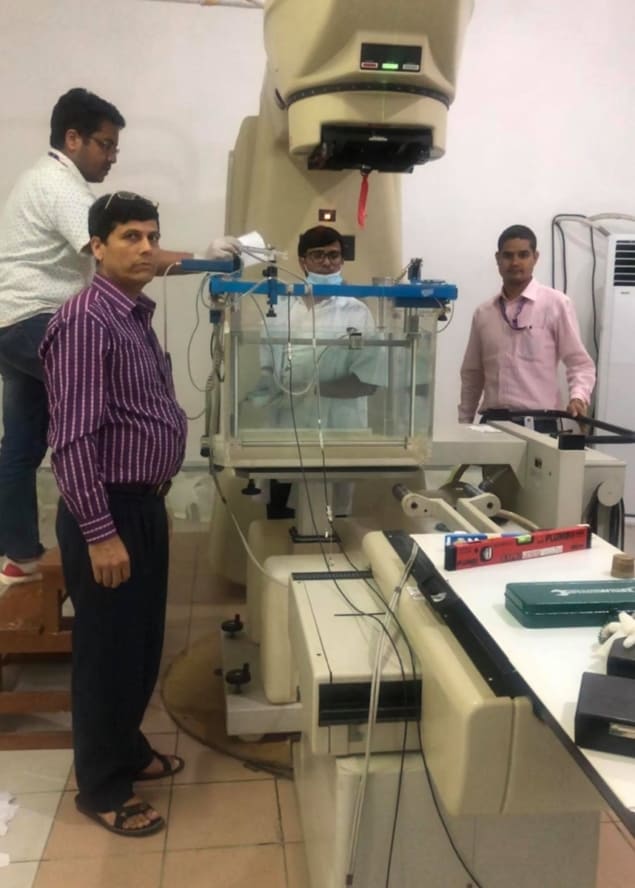They grow up so fast. It seems like only yesterday that the cherubic little darling was gazing wide-eyed at the world, waving its arms incoherently as it figured out how to move. Now it reaches out with those pudgy little arms, purposefully picking up toys and stacking them on top of each other as it actively plays. However, this change didn’t happen over months, or weeks, or even since “only yesterday” – it’s been mere hours. The reason is that this is not a child, but iCub, a wide-eyed, one-metre tall robot built by researchers at the Italian Institute of Technology in Genova that is designed to resemble a small child, as well as learn like one.
The robotic youngster starts out only able to move its eyes, learning to focus on objects of interest. As time progresses, skills develop and motor restrictions are unlocked, to simulate muscle development, and iCub learns to point, play with toys and even use objects as crude tools to push buttons.
iCub was developed to explore the so-called “embodied cognition hypothesis”, the notion that the development of human-like cognition is dependent on learning to physically interact one’s environment – and that, by extension, the development of a truly human-like artificial intelligence is dependent on it having a physical body. The rationale for the hypothesis is at the heart of computer scientist Mark Lee of the University of Aberystwyth’s new book, How to Grow a Robot: Developing Human-Friendly, Social AI.
The first third of Lee’s work explores the history of and current developments in robotics and artificial intelligence (AI) – from pallet-carrying bots in warehouses to computer chess champions – and highlights the issues that arise from trying to derive generalized AI from the prevailing task-based approach to developing AI. The middle section moves on to how robots like iCub might be taught to grow and learn through developmental interactions with their surroundings.
The final section speculates on the future of robotics, considering where and how fast AI might develop and touching on topics including the risk of the singularity, a concern that Lee emphatically dismisses. These areas are rich enough that more could easily have been made out of them. It was also a pity to see trans-humanism defined reductively as being solely about “downloading the brain”. It strikes me that less extreme concepts, such as technological augmentation to expand the limits of the human body could have been explored in a book that examines how we are in many ways defined by the nature and extent of our embodiment.

Overall, How to Grow a Robot is a rich and comprehensive introduction to robotics and artificial intelligence, with a very clear message at its heart. However, it has one central flaw – in my opinion, it is sadly not a sufficiently engaging read.
Both of Lee’s previous books – on intelligent robotics and assembly systems, respectively – appear to have been intended for a specifically academic readership, rather than the popular audience that this book is marketed at. Perhaps Lee, like many scientists before him, found it a challenge to reshape his material for non-specialists. Yes, the explanations are largely there – and I appreciated the use of periodic jargon-busting fact boxes (although I still remain none-the-wiser as to Lee’s distinction between consciousness and self-awareness). However, the work has the feel of a “recommended class reading”, down to the end-chapter bullet lists repeating key “take-aways” for the reader. Personally, I prefer my casual non-fiction to not be presented as if there might be a pop quiz on the material later. More images of some of the commercial robots described in the opening chapter would also have been welcome for the general reader, and were conspicuous by their absence.
Personally, I prefer my casual non-fiction to not be presented as if there might be a pop quiz on the material later
Other structural aspects, meanwhile, serve to bring to mind a different academic format: that of a dissertation or thesis. On the positive side, the work has one well-explained central argument around which the whole book is constructed – a strength some of its popular-science peers could stand to learn from. Unfortunately, this is countered by repeated instances where the author sets up an interesting area of exploration before punting it to a reference text. The clichéd academic phrase “beyond the scope of the present work” is not used, but it might as well have been – variations on “we do not have the space” recur in its place, and create the looming impression of some word limit narrowly met and avenues curtailed. Taking time to direct the reader to extraneous material is admirable, but such links belong in footnotes, not as disruptions to the main text that leave the average reader feeling underserved – especially if they do not have access to the kind of academic library that would be needed to follow up on such references.
In short, How to Grow a Robot is a detailed and informative read – but one whose style and framing might better recommend it to a computer science syllabus rather than your coffee table.
- 2020 MIT Press 384pp £22.50hb


